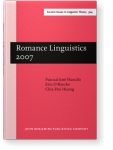Antisymmetry and the Typology of Relative Clauses: Morphological Evidence from Romance
Spanish relative clauses show two different syntactic structures. The first is derived by NP-raising, and the relative clause is selected by a determiner (Kayne 1994). The second is a matching structure and involves operator movement as in the traditional analysis of relative clauses. This latter structure also respects antisymmetry, since a non-overt determiner selects the relative clause in the complement position of a Determiner Phrase, and the head of the relative clause in the Specifier. The operator in this structure may be a Determiner Phrase or a Noun Phrase. While prepositionless relative clauses with que ‘that’ employ a non overt operator, relative clauses with prepositional operators show an allomorphic variation in the case of DP-operators, since the determiner is overt. Relative clauses with coordinated heads, relative clauses with the same preposition selecting the head and the operator, and (anti)reconstruction effects further support this analysis.
